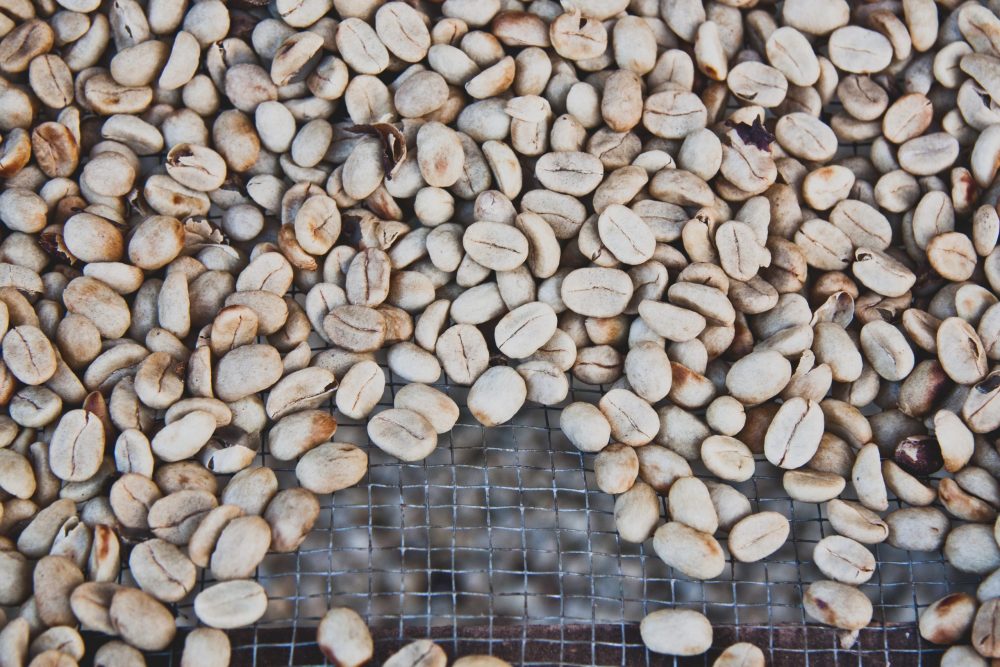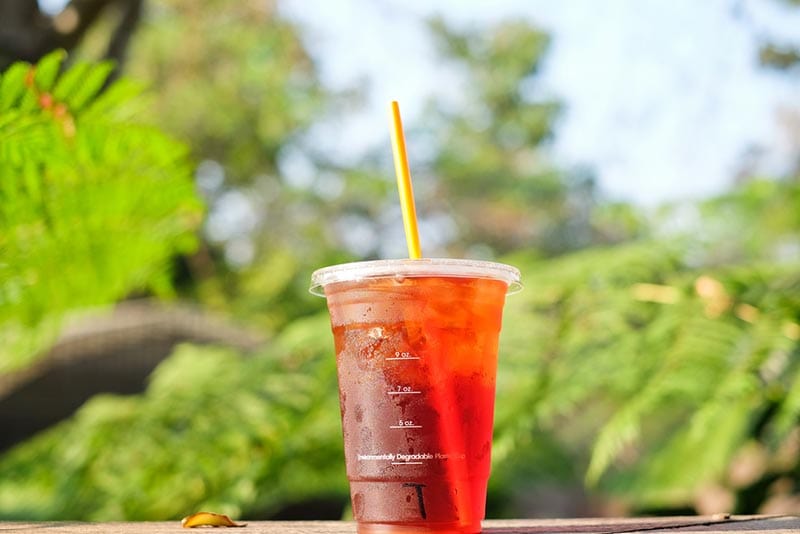
It’s not just a crazy new trend. There actually are some interesting effects of white coffee – but what is it, really? You’ve come to the right place if you’re curious about the explanation behind this new type of roast, and if you’re looking to try it for yourself. We’ll start by outlining what makes white coffee special, and then share some of our top picks.

What Makes White Coffee White?
This is a very reasonable question because – as we all know – coffee beans begin their lives as small green beans, and then become brown during the roasting process. So, where does the white color come from?
It turns out that the white color is there all along. During a typical roasting cycle, green beans begin to lighten in color and then quickly become brown. As the roasting progresses, these beans become darker and darker in color – hence the terms “light roast,” and “dark roast.”
But if these beans are roasted at a much lower temperature (typically 100 degrees Fahrenheit less than what is normal), they can be kept a pleasing white color.
It’s not just about the color. Some of the major benefits of roasting coffee at this lower temperature have to do with caffeine content and with flavor.
Does White Coffee Have More Caffeine?
Believe it or not, white coffee does pack in more caffeine. This is because as the roasting process gets more intense, the caffeine content of beans actually decreases. For this reason, darker roasts will do less to perk you up in the morning than lighter roasts (though the strong flavor of a good dark roast may certainly be somewhat of a pick-me-up).
However, the boosted caffeine content of white coffee might not do much for you. While it is often marketed as having 50% more caffeine than traditional roasts, white coffee actually only has about 5% more caffeine than what we’re used to.
This small difference is negligible, so don’t count on white coffee as being some kind of super energy drink. Don’t drink it for the caffeine, but definitely do drink it for its enjoyable flavor profile.

What Does White Coffee Taste Like?
Because all the various flavor compounds in coffee are brought out at different stages in the roasting process, you can expect the range of roasting levels to follow somewhat of a pattern. In general, lighter roasts are brighter and offer more fruity notes than chocolate notes.
This same pattern applies to white coffee, which is, in some ways, just a super-light roast. For this reason, white coffee is quite bright and acidic. You can expect to struggle to find any bitter notes, or any of the other flavors common in darker roasts (for example, raisin and malt).
In addition to these expected flavors, white coffee also packs a surprising nutty flavor. This aspect is one of the most exciting tasting features of this particular roast. Look for some almond and walnut notes.
Where Can I Buy White Coffee?
If all of this sounds good to you, and if you’re looking to jump into making your own white coffee, the first step is to get your hands on some well-roasted beans. If you’re lucky enough to live near a craft coffee shop or roaster, it’s worth checking to see if it carries any. Be sure to chat with the barista or roaster, and they’ll be able to point you to a good introductory option, suited to your tastes.
Some of the best options are also available online. Here are our top picks:
1. Poverty Bay Coffee, White Tornado
This particular blend is heavy on the nutty flavor notes and packs a strong punch.

2. Caffe Appassionato, White Coffee – Caffe Bianco
Our second pick, Caffe Appassionato’s Caffe Bianco, is notably wheaty and almost yeast-like in flavor.

Whole Beans vs. Ground
Coffee aficionados may balk at the difficulty of finding whole bean white coffee anywhere. Generally, it makes sense to buy whole and then grind your coffee as needed, in order to ensure maximum freshness.
But there actually is an important reason why white coffee is almost never sold as whole beans. Because the roasting process is so minimal, white coffee beans are much denser than traditional beans. This means that they can pose serious issues for your trusty home grinder, and may even damage your favorite machine. So, leave the grinding to companies with specialty machines and just buy pre-ground white coffee.

How To Make White Coffee: Brewing Tips
Once you’ve purchased your new white coffee, you’ll want to jump into brewing a pot right away – but don’t be surprised that the process is a little different than what you may be used to.
When it comes to extracting the coffee, there are some more important departures from the process that you may be used to. Most coffee lovers recommend using white coffee to pull espresso shots, or in a stovetop machine. This is because the density of the grounds means that extra pressure is useful in drawing out flavor compounds.
If you’re just getting into white coffee and you do not want to abandon your trusty drip machine, you’ll still be able to brew traditionally – but to maximize freshness, it may be worth looking into a simple espresso machine or a stovetop machine. As a rule of thumb, go ahead and use the same ratio of coffee to water that you would typically use when brewing a medium or light roast.
Good luck – and enjoy the interesting tastes of this exciting roast.
- Read More: How Much Caffeine is in White Tea?















